USD/CHF Trading at Traderush
I spent another day trading the USD/CHF. If you’re looking for a trading asset that pays out well, it’s hard to go wrong with the USD/CHF on Trade Rush, which gives an 85% return on investment for an in-the-money trade.
I started watching the charts around 3AM EST, and price was seeming to favor an uptrend. I did have some price resistance created around the 0.91882 level (created from the 1:30-1:40 candles), and it was tested and rejected on the 3:10 candlestick. However, I wasn’t looking for another touch and reject of the level as the basis for a put option at the level. This resistance was only about three pips away from the daily pivot level of 0.91913, so I was looking the market to get up to that point instead. Usually, if there is a support or resistance level near a pivot point or a Fibonacci retracement line that I have drawn in, I’ll pass up a potential trade set-up there in favor of waiting for it to get to the price marked by either indicator.
Price did breach 0.91882 as I expected and came up to the daily pivot level on the 3:30 candlestick. It touched and wicked back down, affirming its strength as a probable resistance level. Therefore, I took a trade on the re-touch of the pivot on the 3:35 candle. The general idea of this trade was correct, as the pivot did act as resistance before heading back down, but the actual result went against me by a couple tenths of a pip and I had a losing trade.
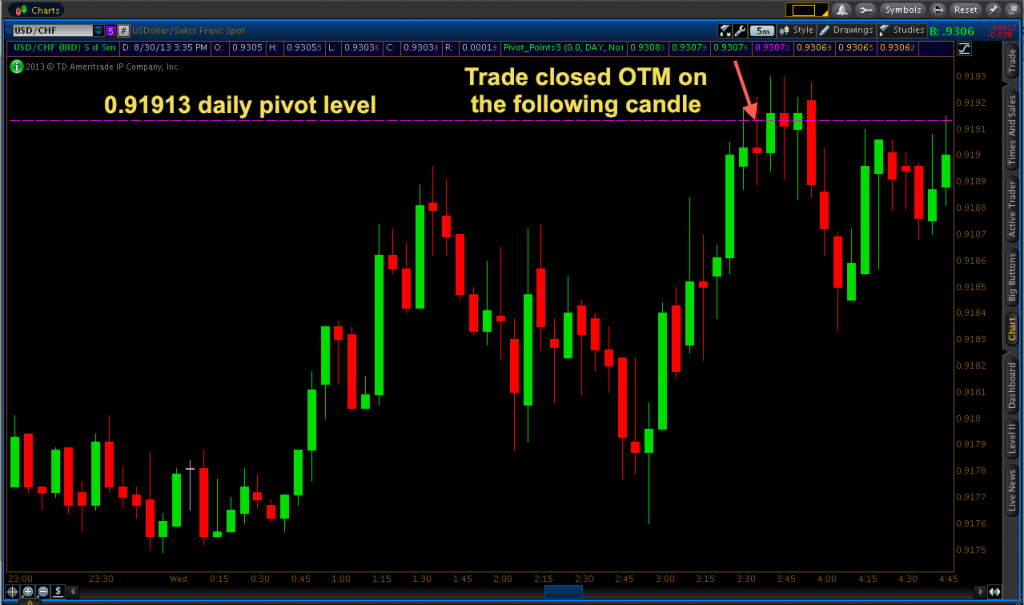
The market would come back to the pivot level on the 4:45 candle and rejected it again. I, however, decided against taking another trade here based on the price pattern that was forming. Based on the trendline that I drew in on the screenshot below, you can see the general shape of upward slanting triangle. In my experience, whenever a chart shows an asset making higher lows – but not necessarily making higher highs, the other part of what constitutes an uptrend – price will start trading in a tight range, and hence form a triangle-shaped price pattern, and eventually break out to one side of the other. Usually, in an upward slanting triangle, the break out will naturally occur in the upward direction instead of obeying the resistance level.
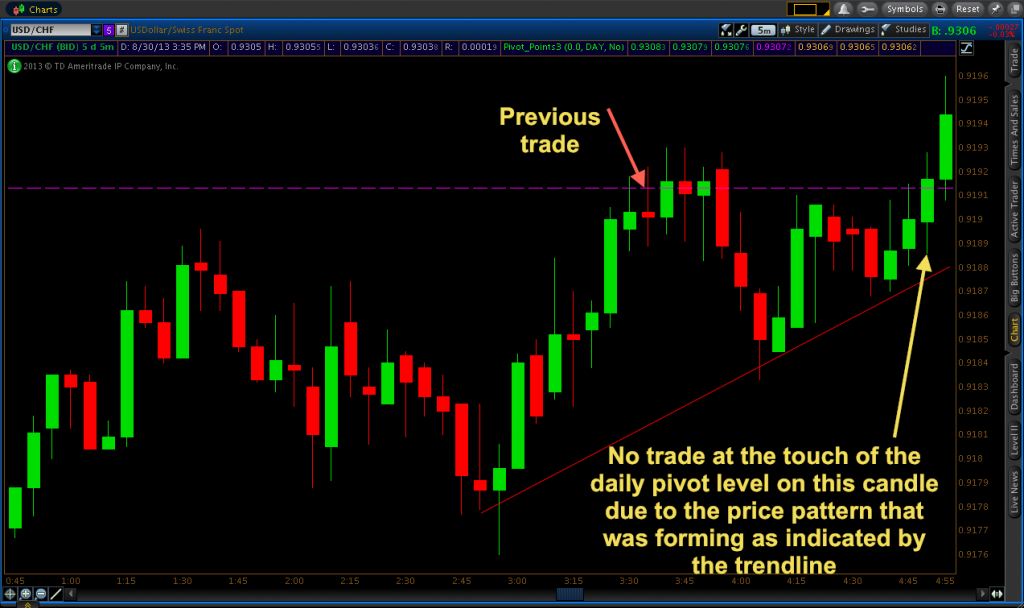
Price did break through and close above the pivot level on the following candle and stayed above for close to half an hour before falling back through. At this point, I didn’t have confidence that future potential trading areas would be likely to set up soon, so I decided to close up shop for the day. For call options, I could have considered 0.91787. If not there, then way down at 0.91709. For put options, the daily pivot of 0.91913 was out of the question due to the break of the level that had already occurred.

The next reasonable level of potentially strong resistance that I could pre-determine at this point was the resistance 1 level of 0.92126. If I had stuck around for close to another three hours, I could have gotten in a resistance 1 put option on the 8:00AM (EST) candle after the initial touch and reject on the 7:30.
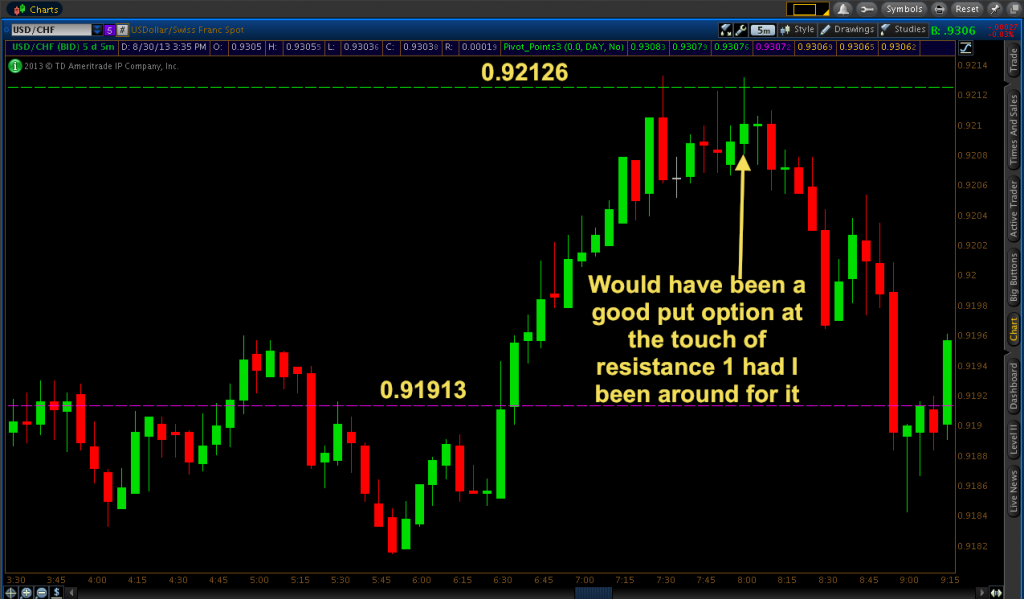
Beyond that, resistance 1 would have been available for trading just as the U.S. equities markets opened. It’s tough to say whether I would have traded resistance 1 at this point. Obviously it’s tough to say in retrospect by only relying on the resulting price data. I’m inclined to say that I would have passed up this trading opportunity, however. Based on the price history alone, you can observe that more and more momentum was heading into the uptrend, making a put option pretty risky here.
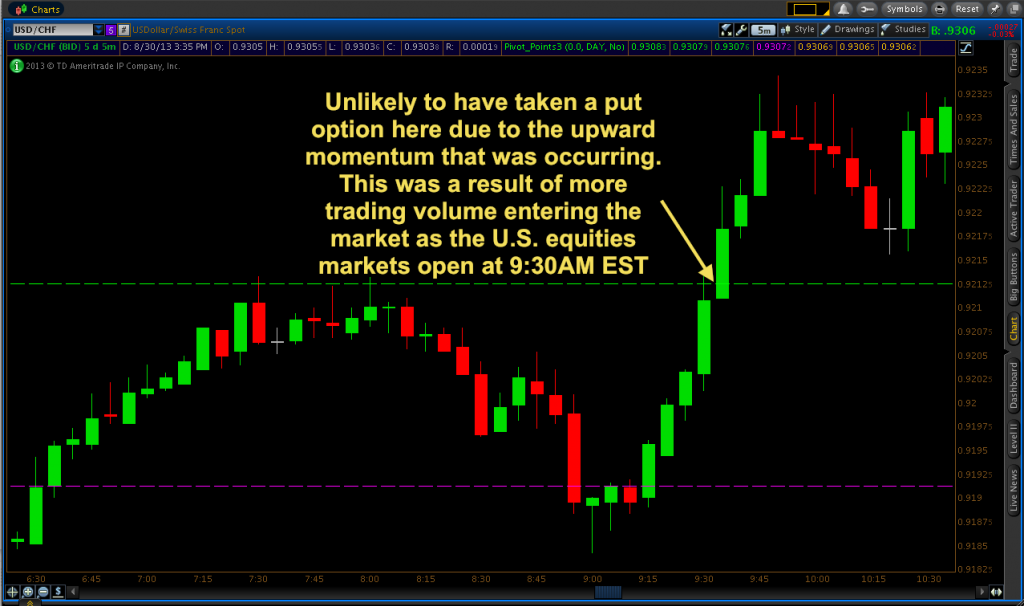
Probably the best trade of the morning would have been at around 10AM with the 0.92286 resistance level that had formed. A series of six consecutive wicks had formed around the level in total and usually after the third straight wick you can be confident that the level will be likely to hold in a situation like this.
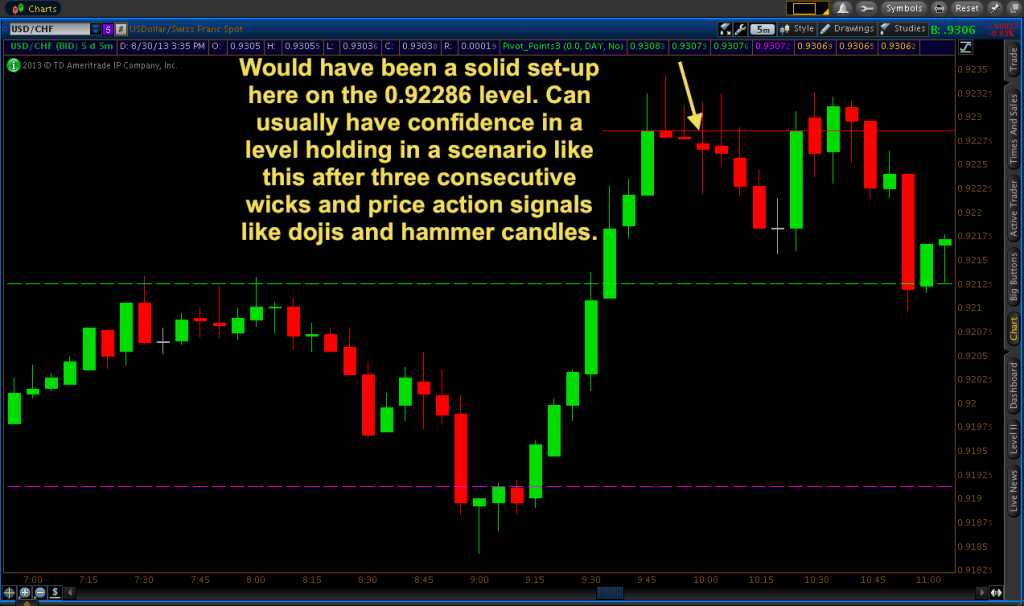
High volatility is normal around 9:30AM EST, as U.S. markets open and more trading volume enters the market as the New York session gets into full swing. If you do trade these early morning market hours, be wary around 8:30AM EST (a common news time) and 9:30AM, as this is when you will normally see influxes of more trading volume. And of course, when there’s more trading volume coming into the market, technical cues from previous price data (set during a lower-volatility period) won’t be as strong or reliable. Therefore, any trades taken will have a lower likelihood of panning out as a result.
So always be careful. Mistakes will happen for all traders and I make them occasionally. But just be smart and look for the best set-ups available to you according to a strategy or system that has been historically sound in being profitable. What I show you here through my blog articles is just one example. But overall, you need to be picky in which trades you decide to take when it comes to binaries taken through offshore brokers due to the fact that the risk is always higher than the reward on these basic high/low options. Predicting the future direction of the market is rarely easy and even when multiple factors seem to support the market heading in a certain direction (and naturally taking advantage of this by placing a trade), it can unexpectedly go against you. And don’t expect every day to be profitable. In fact, three out of my last four binary trading days haven’t been profitable. But over the long-run I know that I have a strategy/way of trading and general mentality about the market that will result in net profitable trading, and that’s really all that it boils down to.